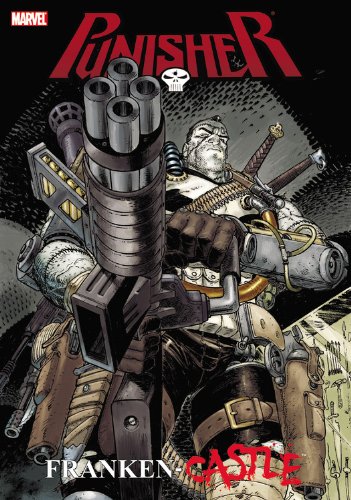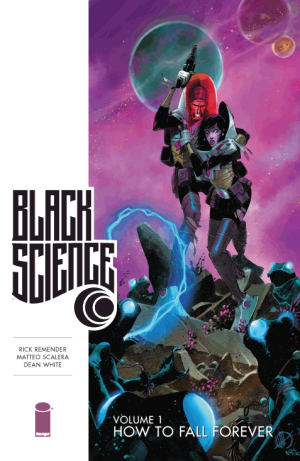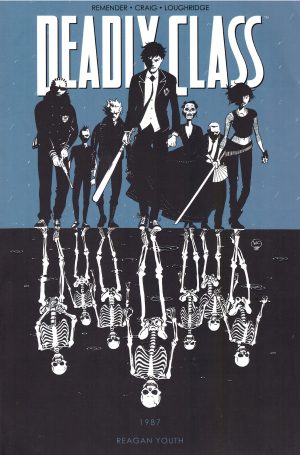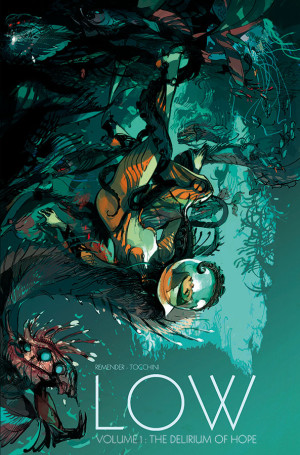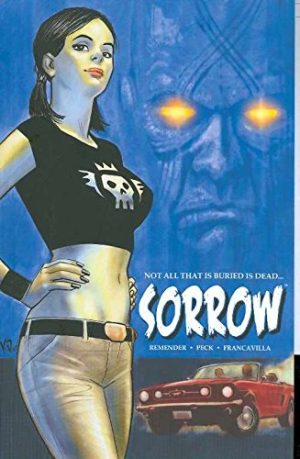Review by Ian Keogh
An extremely appealing aspect of Rick Remender’s writing is an ability to think big. It’s most apparent on creator-owned titles where he’s not hampered by concerns about changing company properties, but his Captain America was an imaginative reworking, and the recommendations showcase his creativity. What, then, to do with the Punisher? The only real attempt to remove him from his single-minded purpose was a rare early flop for the Marvel Knights imprint, and although generally fun, Dark Reign and Dead End hardly strayed far from the Punisher template. Franken-Castle sweeps away any sense of familiarity.
The ending apart, the opening chapter is traditional Punisher, yet what follows certainly isn’t. The title and cover illustration reveal there’s been a considerable change, and while not everything about Franken-Castle slots neatly together (the transformation is clunky), for the most part it’s different and it’s a hell of a lot of fun. It tips the Punisher into the world of Marvel’s monsters, Werewolf by Night, Morbius, the Mummy, Man-Thing, and thousands of minor creations. They’re being hunted by a relentless force of vengeance, so creating their own relentless force of vengeance is just the ticket. A second set of circumstances returns the modified Punisher to the real world (well, Marvel’s New York).
Artistically, Franken-Castle is all over the place. Wonderful painted period pages from Dan Brereton are highlights, but Tony Moore draws considerably more pages than anyone else. His is a work intensive and detailed method easy on the eye (sample spread left), he’s fond of a good massacre and he really enjoys Punisher’s battle with Daken, but the quality drops when he’s rushed. The other sample art is from Roland Boschi, whose work is sketchier, and also strong on layouts, but his Punisher looks strangely put together, the head often too small. Stephen Segovia has problems with perspective and scale, his Daken varying enormously in size, while Paco Diaz, drawing pages of the same chapter, is generally sketchier, but more imaginative. Diaz also works with Moore, neatly modifying his style to mesh with the pages drawn by other artists. John Romita Jr? When was the last bad page of art you saw by him? In that company, Jefte Palo isn’t poor, but is ordinary.
Wolverine’s son Daken has a large role in the opening chapter, then in four chapters of totally over the top mayhem crossing into his own title, hence the writing contributions of Marjorie Liu and Daniel Way. Together with Remender they construct one cinematic set piece after another featuring characters able to recover and regenerate from the most ridiculous injuries. There’s no logic to it beyond a constantly moving series of blowout battles, but sometimes that works anyway. Remender’s dialogue, especially for Daken, is too arch in places, but this is fun. What doesn’t work as well over Franken-Castle are attempts to tie what the Punisher’s going through with thoughts of his dead wife. They’re unconvincing after all these years, and intrusive without any real pay-off, but Remender does have a smart way of restoring Frank to his former form, a restoration always inevitable.
A little change every now and then is generally a positive experience. Franken-Castle is an entertaining diversion, a way of ramping up and exaggerating the Punisher, and while the background narrative may not convince, Remender strikes gold where it counts, with a rampaging Frank Castle. Remender’s Punisher concludes with In the Blood, while both are combined with two other Punisher graphic novels as Rick Remender Punisher Omnibus.
